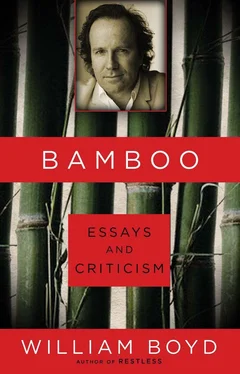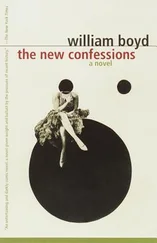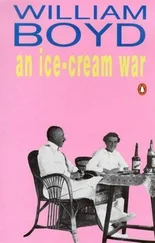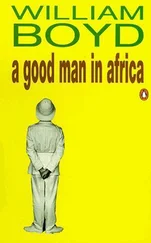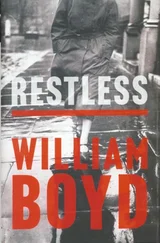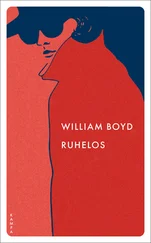I left the “Big O” and drove back to take some more photographs. I wandered uneasily around, snapping shots covertly. The girls in the maroon car were back, parked at the drive-thru, eating something, but the streets were as quiet as ever.
Let these be your delight, secretive hunter,
Wading the sea-lines, moist and ever-mingling,
Mounting the earth-lines, long and lax, lethargic.
These lines are swift and fall without diverging .
The melon-flower nor dew nor web of either
Is like to these. But in yourself is like:
A sheaf of brilliant arrows flying straight,
Flying and falling straightway for their pleasure ,
Their pleasure that is all bright-edged and cold;
Or, if not arrows, then the nimblest motions,
Making recoveries of young nakedness
And the lost vehemence the midnights hold .
I didn’t stay to see the stars at Tallapoosa. I left for Atlanta long before night fell.
1984
Ninety years ago this week, on a cold blustery Thursday morning on 17 December 1903, Wilbur and Orville Wright carried their flying machine — the Flyer — from its wooden shed and set it carefully on the forty-foot launchway of pine two-by-four planks and prepared it for take off. Their camp was on the Outer Banks, long thin islands, 90 percent sand dunes, off the coast of North Carolina. The nearest hamlet was Kitty Hawk, a small cluster of clapboard houses that sheltered the seasonal fishermen and the crew of the coastguard station. If you didn’t fish or work for the coastguard there was nothing much to bring you to Kitty Hawk. All around them was sand and a few huge dune hills, the Kill Devil Hills, thrown up by the scouring winds that blew in off the wintry Atlantic. It was the winds — their constant presence, their reliable force — that had drawn the Wright brothers from Dayton, Ohio to Kitty Hawk where, over the previous three years, they had spent the autumn and early winter months testing their big man-carrying soaring gliders and perfecting the controlling mechanisms that allowed them to steer.
The wind that December day was gusting between twenty-two and twenty-seven miles an hour, a little too strong for their purposes but, as both the brothers were determined to be back in Dayton in time for Christmas, they decided to press on. So they hung out a signal on their wooden shack to alert the men in the coastguard station at Kitty Hawk some four miles away. They needed witnesses for what they hoped was about to ensue. Three surfmen duly strolled down the beach from the station: John Daniels, Adam Etheridge and Will Dough. Two curious hangers-on accompanied them, a lumber merchant called W. D. Brinkley and a teenage boy, Johnny Moore.
Orville Wright set up his glass-plate camera on a tripod some way off aiming at a point towards the end of the launching rail. John Daniels was invited to take the photograph, a simple matter of squeezing the rubber bulb that activated the shutter. The small four-cylinder petrol engine that powered the two pushing propellors on the Flyer was started and was run for a while to allow the motor to warm up.
The honour of piloting the Flyer had been decided by a toss of a coin and it was Orville, dressed in his usual business suit, with stiff collar and tie, who lay down beside the motor on the bottom wing and hooked his shoes behind a strut on the trailing edge. His hips were fixed in a wooden cradle that could slide laterally to and fro, a movement that activated the “wing-warping” devices that allowed the pilot to control the direction of the Flyer. His hands were on the control lever that operated the front horizontal elevator. The whole 600-pound flying machine rested on a plank which in turn was supported by a small wheeled trolley (with wheels made from bicycle hubcaps) which ran along the launching rail, which was pointed in the direction of the prevailing wind.
At 10.35 the restraining wire was slipped and the Flyer began to clatter slowly along the launching rail. It was moving so slowly that Wilbur — who was holding the struts on the right-hand wing tip to keep the machine level — had no difficulty jogging alongside. As the Flyer reached the end of the track Orville pulled the control lever to turn the big front elevator up and the machine rose abruptly into the air, the plank on its trolley falling away from the skids into the sand. The Flyer’s speed was approximately thirty miles an hour at this stage but, because of the stiff headwind, was actually moving through the air at about seven mph. Wilbur, loping alongside, easily kept pace with the machine’s undulating progress through the air. Orville, now some ten to fifteen feet above the ground, was having difficulty controlling the big elevator. He would raise it, and the Flyer would surge upwards, he would lower it and then it would dip suddenly towards the sand. This sinuous vermiculate course was maintained for about twelve seconds until an oblique gust of wind coinciding with a downward dip caused one of the skids beneath the machine to hit the sand and the Flyer came suddenly to earth with a severe jolt some 120 feet along the beach from the point where it had risen from the launching rail.
One small miracle, besides the larger one that was achieved that day at Kill Devil Hills, was that John Daniels, the big surfman from the coastguard station, had remembered to press the rubber bulb that activated the shutter release of the camera as the Flyer took to the air, thereby inadvertently producing one of the most famous photographs of the twentieth century. It’s not just that the camera recorded one of those moments that changed the world irrevocably but it is also, or so it seems to me, a wonderful photograph in its own right: perfectly exposed, wonderfully sharp, and a poignant and moving tribute to the human spirit; values enshrined not so much in the fragile beautiful white machine lifting itself slowly into the air but rather in Wilbur’s figure to the side — tautly poised, legs apart, staring at his younger brother prone on the lower wing, his arms half crooked, expectant, almost willing the machine into its new element. Of all the many photographs the Wright brothers took of their flying machines in their months at Kill Devil Hills, and some of them are superb, this adventitious snapshot by John Daniels must rank as one of the most memorable images of all time.
One wonders, also, what Wilbur would be thinking at that moment, at the culmination of this intense but comparatively brief interest in powered, heavier-than-air flight. It is hard to say: neither Wilbur nor Orville Wright seemed to be expressive or forthcoming men; there is no trace in their writings of much exhilaration or indeed of any romantic notion of being the first men to fly. They were a redoubtably practical pair, modest, capable and dogged, and it seems almost as if they were drawn to the challenge of powered flight out of a sense of whim rather than adventure, of a need to find some beguiling way of passing their time rather than being driven by obsession.
They were members of a large family: there were two other older brothers and a younger sister, and Wilbur’s birth, in 1867, the third child, preceded Orville’s by four years. Their father was a bishop of a nonconformist Protestant sect called the Church of the United Brethren in Christ, but neither Wilbur nor Orville “got” religion, their only concession to their father’s faith was that they would not fly on a Sunday. The atmosphere in the family home was close and folksily fun. Wilbur and Orville, neither of whom married, appeared to have a twin-like communication and understanding with each other. Neither drank or smoked. Both were averagely tall and lean, Wilbur was quite bald by his thirties, Orville was balding but wore a bold moustache that caused some to liken him to Edgar Allan Poe. He had a reputation in the family of being something of a dandy, though by any other standards than those of the Wrights such foppishness is hard to detect, though it is true that in one photograph of the two of them Orville is wearing a pair of snazzily checked socks.
Читать дальше
